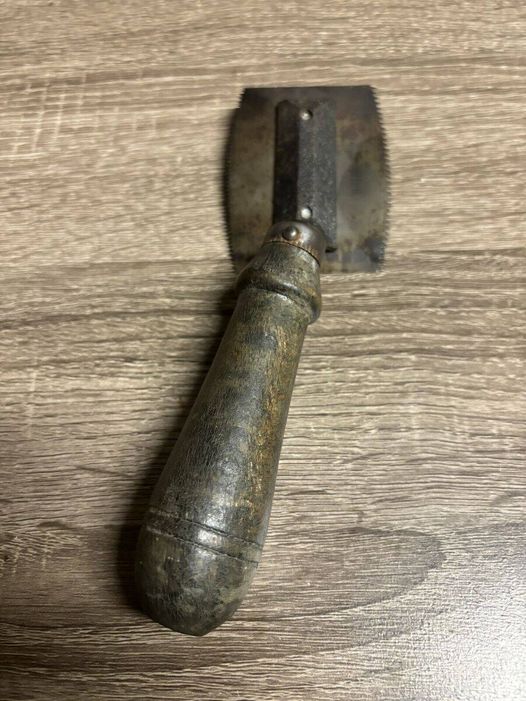History
The veneer saw, a key tool in woodworking, appeared in the 19th century. This era saw significant advancements in woodworking techniques, driven by the growing demand for finely crafted furniture and intricate inlays. Veneer saws were designed to cut thin slices of wood, or veneers, from larger timber pieces. Craftsmen used these slices to enhance surfaces, creating decorative patterns or making less expensive woods look luxurious. Early veneer saws, made from high-quality steel, often featured ornate handles, reflecting their role in skilled craftsmanship.
Usage
Veneer saws have thin, fine-toothed blades essential for precise veneer cutting. Their design includes a narrow blade set at a slight angle, which slices through veneer cleanly, avoiding splintering. Craftsmen employed these saws to trim and fit veneers onto furniture, cabinetry, and decorative panels. The task required a delicate touch and steady hand, making the veneer saw ideal for high-quality woodworking projects.
Legacy
Although modern technology has introduced power tools for veneer cutting, vintage veneer saws hold a special place in woodworking history. Collectors and enthusiasts value these tools for their craftsmanship and historical significance. They embody the artistry and skill of traditional woodworking. Often displayed in workshops and museums, vintage veneer saws remind us of the meticulous work involved in creating fine furniture and intricate wood designs.
Today, the legacy of the vintage veneer saw endures, symbolizing the precision and artistry of historic woodworking. It continues to inspire contemporary craftsmen who appreciate the elegance and tradition of hand tools in an age of automation.

Leave a Reply